Learning activities
Outcomes
Through the activities described below, students will understand that before computers, typewriters were a useful tool for people whose work involved writing a lot of letters or stories, and be able to imagine a tool for communicating in the future.
- 4-minute video about typewriters
- a typewriter (if possible)
- drawing and writing materials
- images (click on the images below to enlarge for printing or display).
Preparation
With your students, watch the video 'What is this? Typewriter'.
The opening of the video shows rainbow stripes moving across the screen from left to right. A cloud shape pops into the coloured stripes containing an image of an old fashioned typewriter. The video title 'What is this' is superimposed on the typewriter. A question mark bounces into position at the end of the text ('What is this?') and an eyeball rolls around in the dot forming the bottom of the question mark and winks. Upbeat music plays in the background. A swarm of question marks moves across and fills the frame. It cuts to an animated television screen with spinning question marks in it. A tapping sound can be heard. The vision cuts to Angela, the presenter.
ANGELA: I can hear some very fast tap, tap, tapping ... like something being hit.
(Bell rings)
TEDDY: And I heard a bell ring. But I can't guess what it is just by the sound. Do you think we could see the object?
ANGELA: Sure, Teddy.
(The keys which are round with brass edges and the letter in the middle appears in the television screen. Angela and Teddy turn to look at it.)
ANGELA: What can you see?
TEDDY: Ah, that's a keyboard. Ooh. I know! I know! It's a computer. But the keys are round. And where's the screen?
(The camera pulls out to a wider shot as Teddy describes what he sees. Then it cuts back to Angela.)
ANGELA: Well, Teddy. It has a keyboard like a computer, but that's not what it is.
(Angela and Teddy are on the screen with the typewriter between them. It has a piece of paper protruding from the top of it.)
ANGELA: Let's see if we can figure it out. What do you think it's made of?
TEDDY: It looks ... (touching the object) and feels like metal.
(Angela uses pencil to tap a side of object. A metallic tapping sound is heard.)
ANGELA: And ... it sounds like metal, too. Do you think it is old or new?
TEDDY: Mmm ... it has lots of scratches on it. And some of the letters on these round keys look a bit worn out. (Close-up of keys with letters on them.) I think it's old.
ANGELA: You're right, Teddy. Often, when we look closely at things, we can figure out whether they are old or new. This is called a typewriter, and typewriters were made around 150 years ago.
(The the word 'typewriter' appears in the animated the television screen.)
ANGELA: This one was made in 1924.
TEDDY: That's a long time ago, isn't it?
ANGELA: It is, Teddy. About 90 years ago. Typewriters were used for many years to write with.
TEDDY: Like I can on my computer?
ANGELA: Yes, but a typewriter prints the letters of the alphabet straight onto a piece of paper that was threaded through this roller.
(Angela points to the roller, turns the knob and moves the paper through roller.)
TEDDY: (laughs) The roller looks just like a rolling pin.
(Close-up of the roller gears.)
ANGELA: It does, Teddy. Each of these tiny hammers, placed in a row ...
(Angela points to the row of hammers in typewriter. Camera shows close up of hammers.)
TEDDY: In between the keyboard and the roller ...
ANGELA: ... has a different letter on each one.
(Close up of hammers showing upper and lower case letters on each hammer.)
ANGELA: And when we hit a key, look what happens.
(Angela pushes down on the 'T' key on the typewriter. Close up of the 'T' hammer coming up and striking the typewriter ribbon leaving a lower case 't' printed on the paper.)
TEDDY: Wow. The hammer jumps up and hits a ribbon stretched across the roller, and it prints the letter on the paper. How did it do that, Angela?
ANGELA: The ribbon has ink on it, and when the hammer hits it (close up of hammer hitting ribbon), it leaves an imprint of the letter behind on the paper (a lower case 't' is printed on the paper).
(Close-up image of a 1970s portable typewriter appears in the television screen. Cuts to zoom out of the entire typewriter.)
ANGELA: Now, have a look at this typewriter, Teddy.
TEDDY: Wow! The hammers are a bit more covered up, and it isn't just plain black, like the first one. It's a very creamy white.
(A small 1970s portable typewriter has replaced the 1924 typewriter and sits between Teddy and Angela.)
ANGELA: Is it older or newer than the other typewriter?
TEDDY: It looks much more modern, doesn't it? Can you tap it with your pencil please, Angela?
(Close-up of Angela tapping typewriter with pencil. It makes a plastic tapping sound.)
TEDDY: (Gasps) That sounds like plastic and it doesn't look so worn out. Some of the keys are different, too; they're square and some of them are red.
(Close-up of keys showing shape and colour.)
TEDDY: Yep, I reckon it's newer.
ANGELA: It looks quite a bit smaller, too. So, who do you think would use a typewriter, Teddy?
TEDDY: The typewriter meant we could print as well as write by hand ... so ... anybody who wanted to write things.
(Angela nods and gives a thumbs up.)
If I wanted to write a book it would be much quicker than doing it with a pencil, I reckon.
ANGELA: That's right. When we compare things we use today with things used in the past, we can notice the changes that have been made.
TEDDY: Like their size, their shape, colour, what they're made of ...
ANGELA: ... and even how they work and what they can do. Well, we have to go now. Say goodbye, Teddy.
TEDDY: (Waves and laughs) Goodbye, Teddy!
ANGELA: Oh, Teddy. Bye now.
Upbeat music. An animation of rainbow stripes moving across the screen from left to right. A cloud shape pops into the coloured stripes containing an image of a typewriter. The video title 'What is this?' is superimposed on the typewriter. This dissolves to National Museum of Australia logo.
A3 printouts
- Download Advertisement for Smith Premier typewriter452.0 kb pdf [ PDF | 452.0 kb ]
- Download Ruth Park using a typewriter1.8 mb pdf [ PDF | 1.8 mb ]
- Download Seven women in an office 1910256.4 kb pdf [ PDF | 256.4 kb ]
- Download Women typists working in an office 19531.1 mb pdf [ PDF | 1.1 mb ]
- Download Girls at the Home of the Good Shepherd 19631.3 mb pdf [ PDF | 1.3 mb ]
- Download Advertisement for Monarch typewriters489.1 kb pdf [ PDF | 489.1 kb ]
- Download Four members of the South African WAAF 19421.6 mb pdf [ PDF | 1.6 mb ]
- Download Advertisement for Remington typewriters114.9 kb pdf [ PDF | 114.9 kb ]
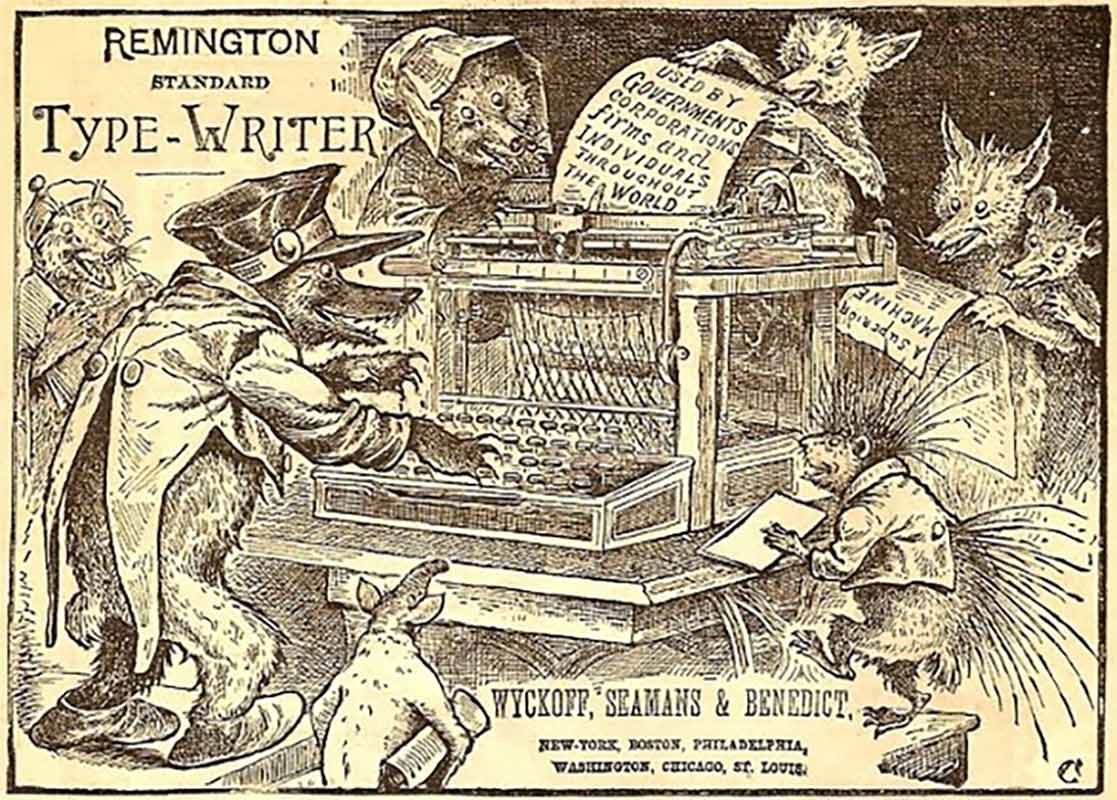
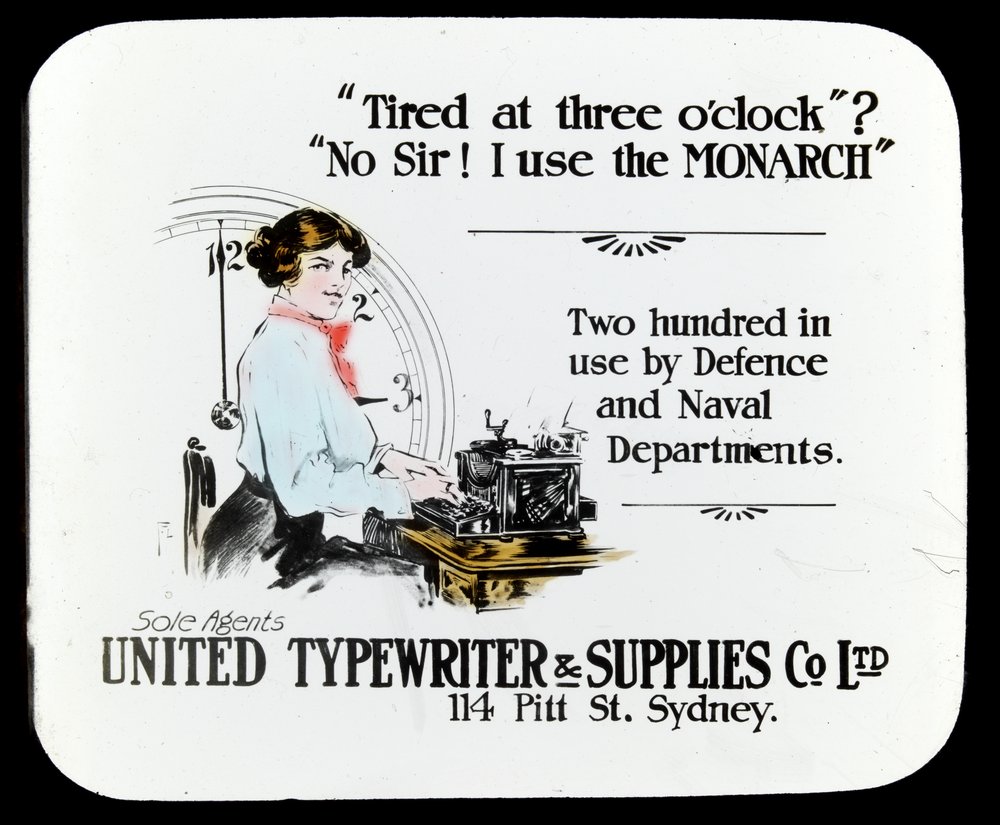
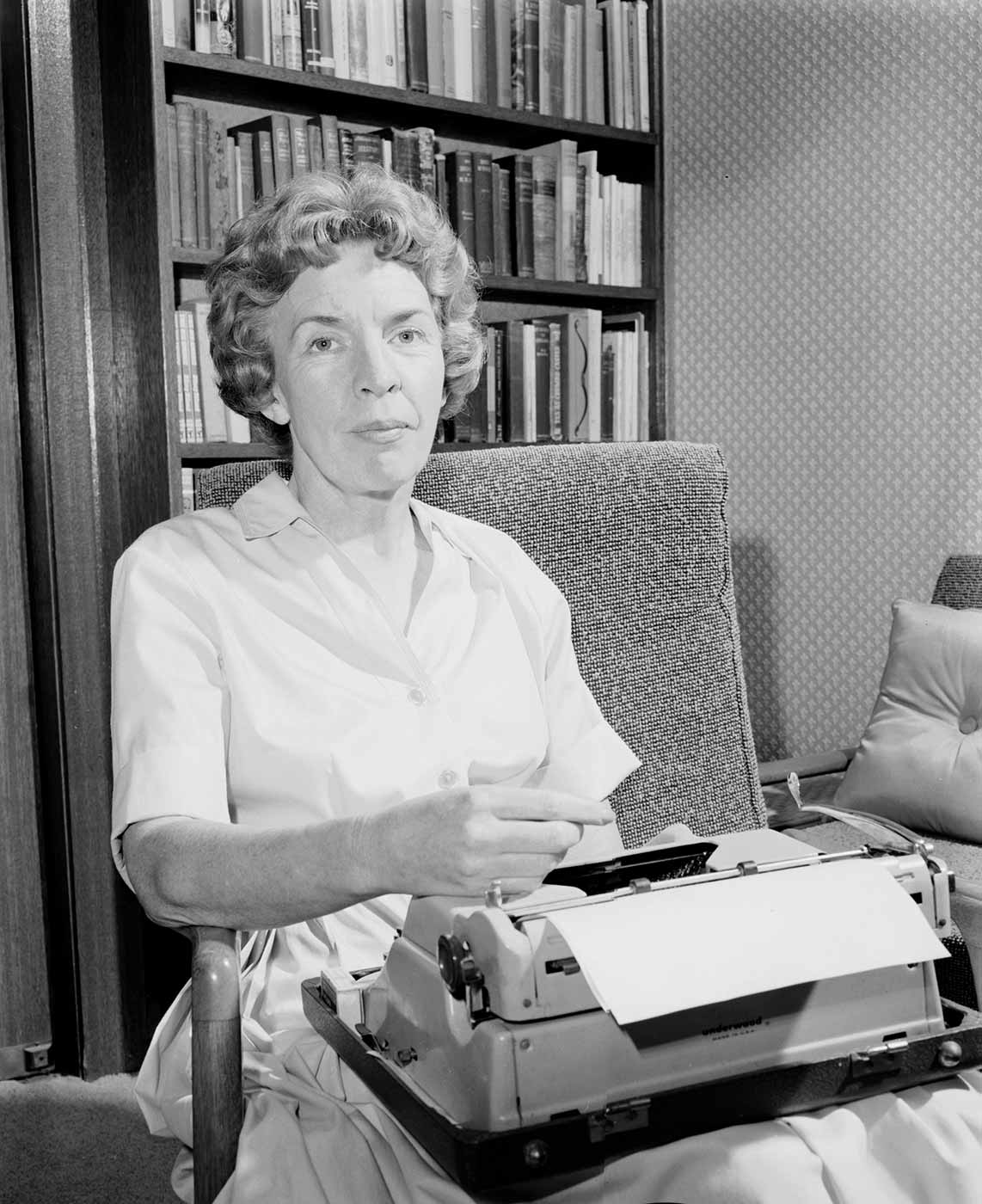
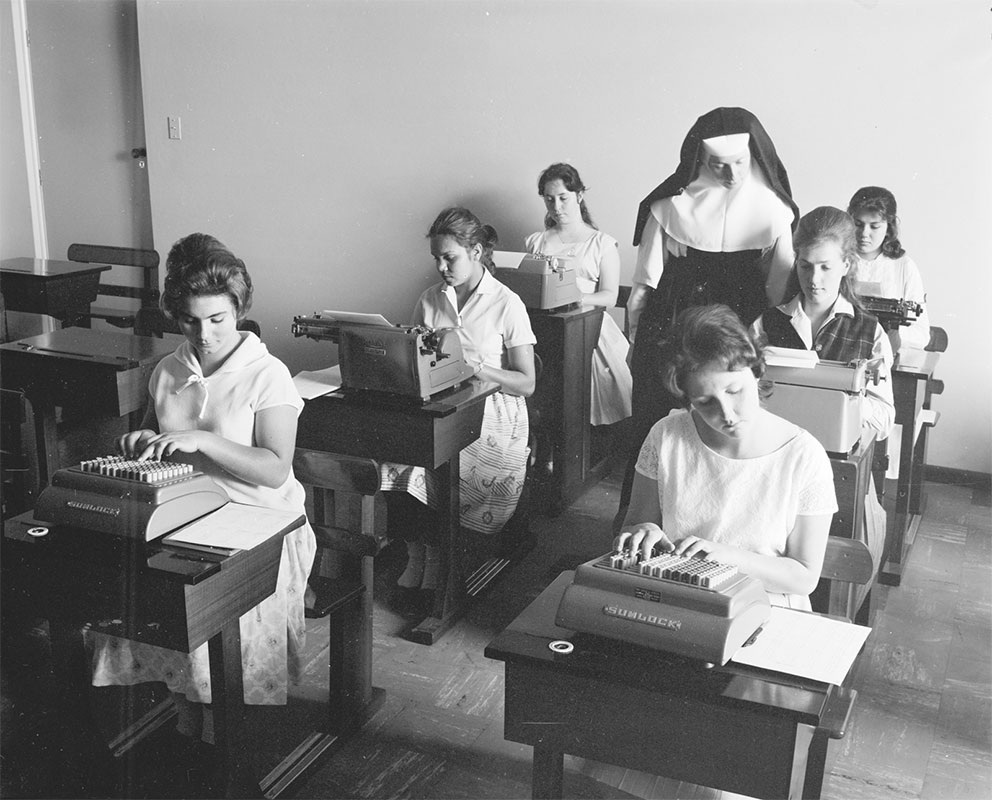
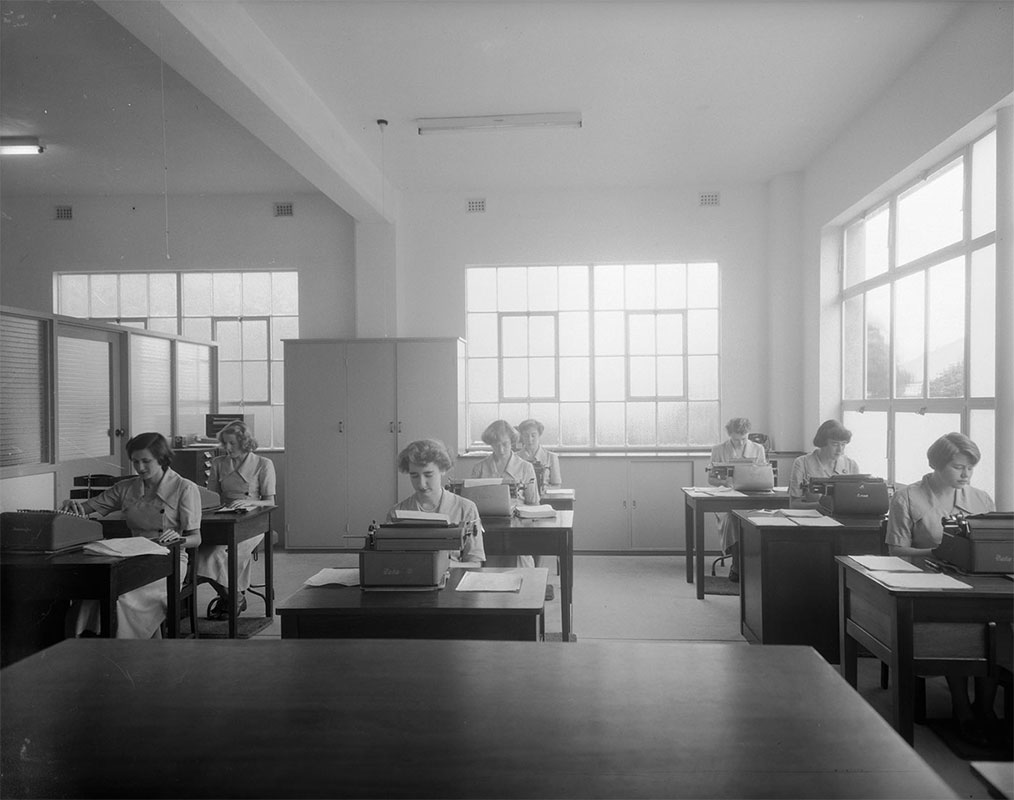
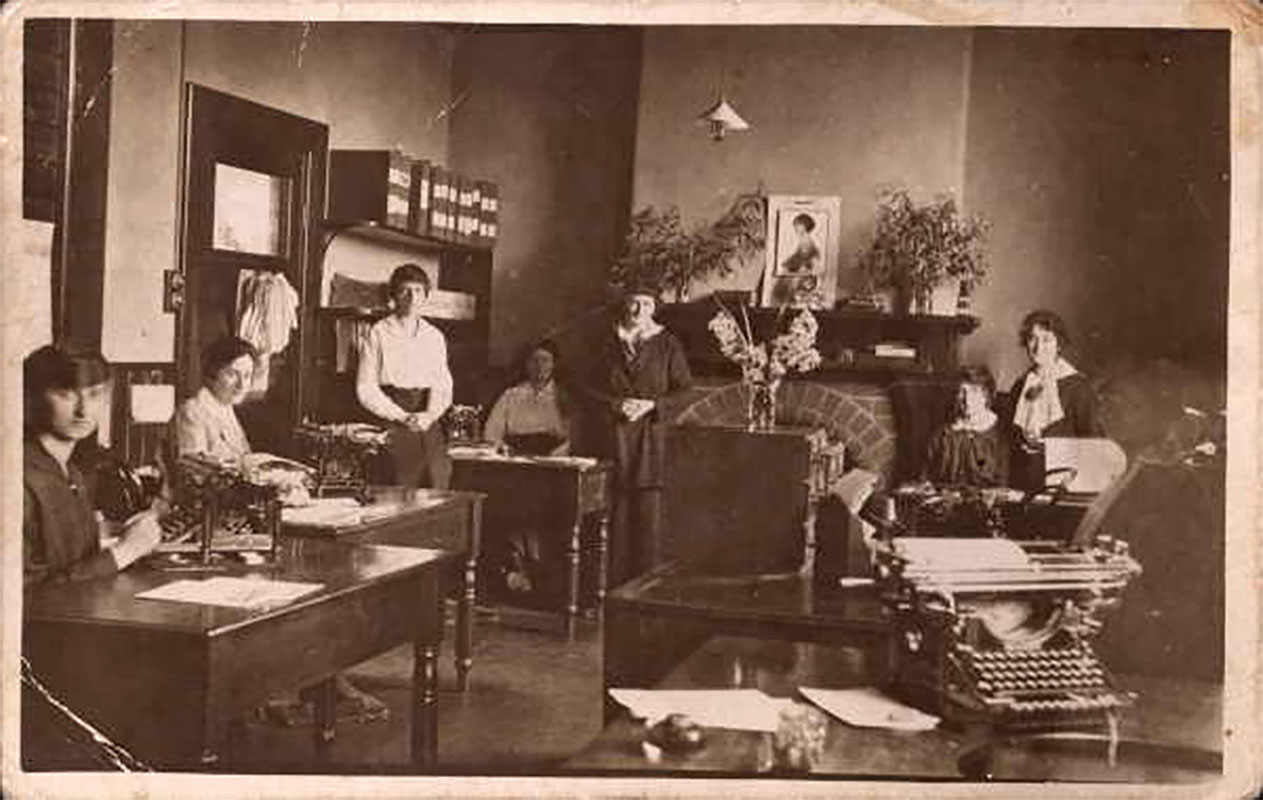
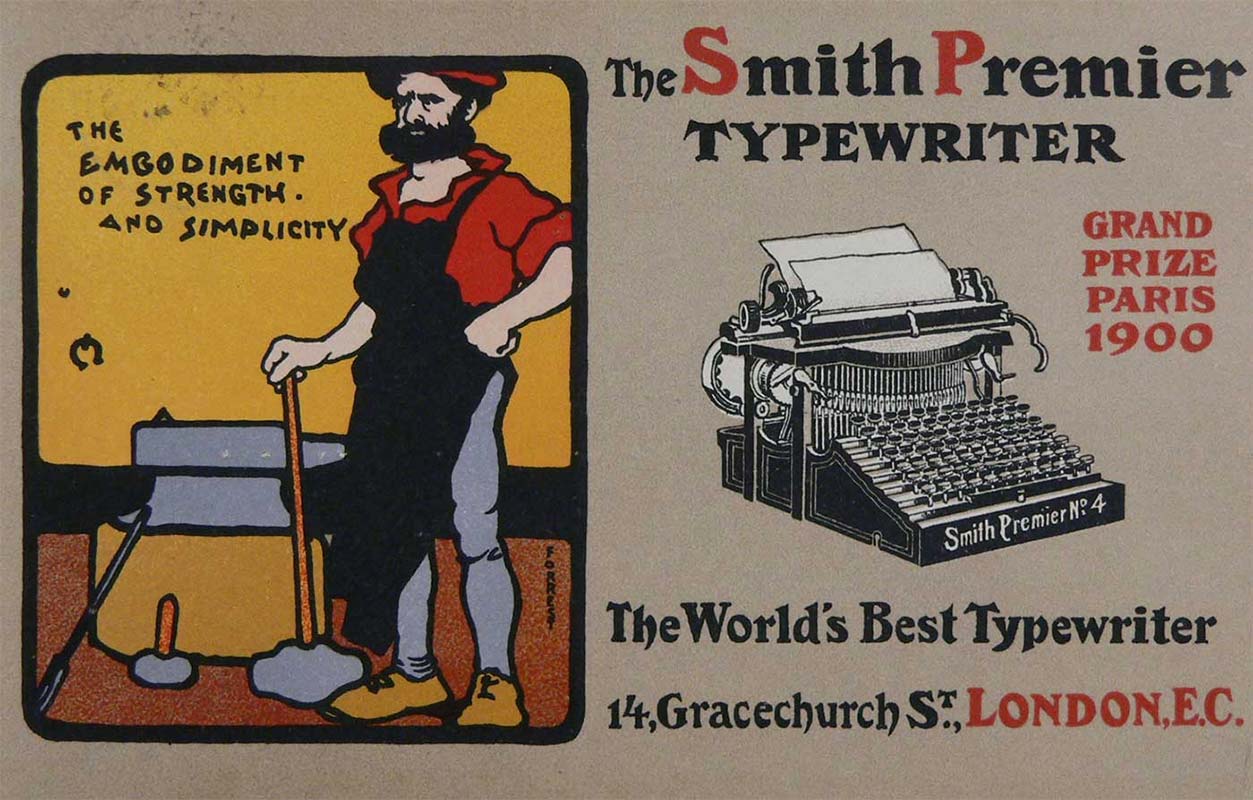
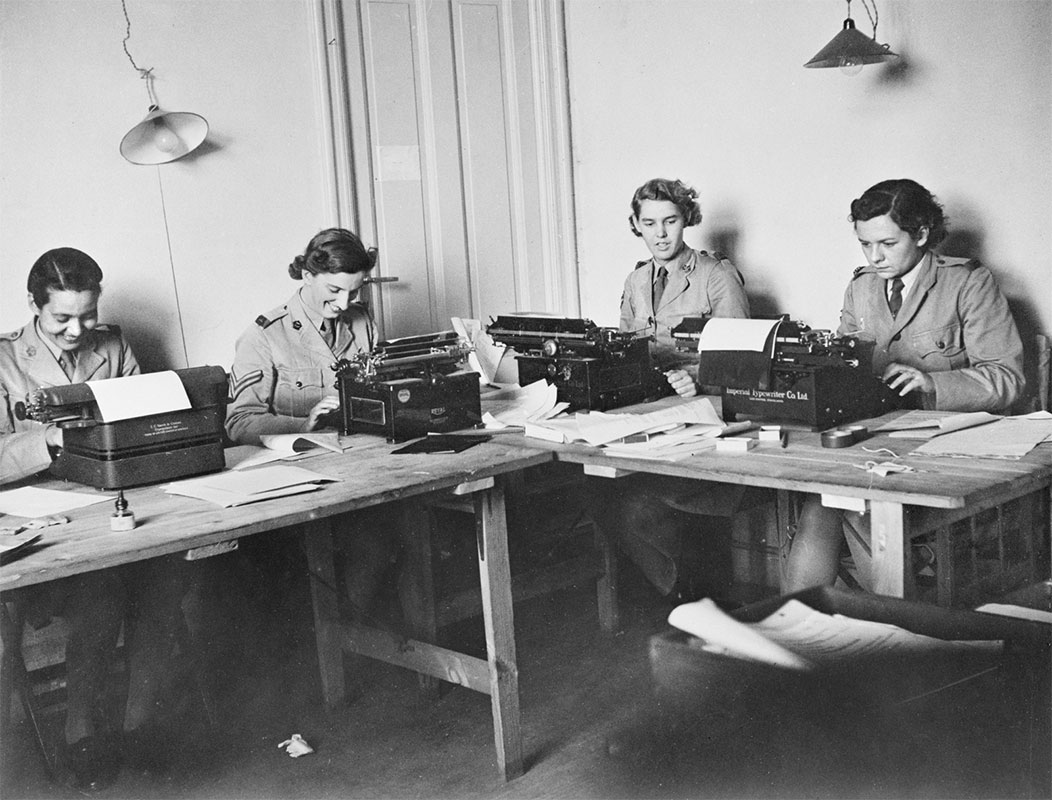
1. Typing
If possible, bring a typewriter into the class so that students can each take a turn at typing some words on a page. Compare with typing on computer keyboards or phone/tablet touchscreens.
2. Investigating images of typewriters
Show students the array of images about typewriters, including early advertisements for typewriters, and photographs of people using typewriters. Invite them to consider:
- When were typewriters used and by whom? Typewriters were used for about 100 years, from the late 1800s to the late 1900s. Many different kinds of people used them in offices, on battlefields etc, including secretaries, reporters, authors and people employed to turn speech into text. They were mostly used by women.
- Look at the early advertisements, one by one: what worries do you think people might have had about typewriters when they were first invented? Maybe they would be hard to use? Maybe they would make communication less personal?
- In what ways do you think that typing would differ from writing by hand? Typing was quicker, more uniform and easier to read, less personal because everyone’s handwriting is unique, but typewritten text is consistent regardless of the typist.
- Look at the photographs of people using typewriters. In what ways do you think that typing would differ from writing on a computer? Would typing be more manual or tiring? There’s no ‘undo’ button on a typewriter — so it's more difficult to correct your work! Many typing tasks were not very creative — often the typist was making a copy of something already written.
3. Questioning
Having looked at the images and talked about them, ask each student to write down a question they have about typewriters.
Select some of the most interesting questions for further exploration. If you have a typewriter in the class, you could type up each of the most interesting questions on a page.
Rather than answering the question, invite others in the class to respond. If no one is able to answer the question, talk about ways you might find out the answer. If appropriate, ask the students to see if they can find out the answer by talking to their grandparents.
4. Imagining
Remind students that typewriters were used 100 years ago but that today they're hardly used at all in places with electricity because we have computers. Ask them to imagine how we’ll communicate our words 100 years from now — when the students are great-great-grandparents. Draw a picture or write a description of how the communication happens.
Explore more on What is this?
Explore more on What is this?